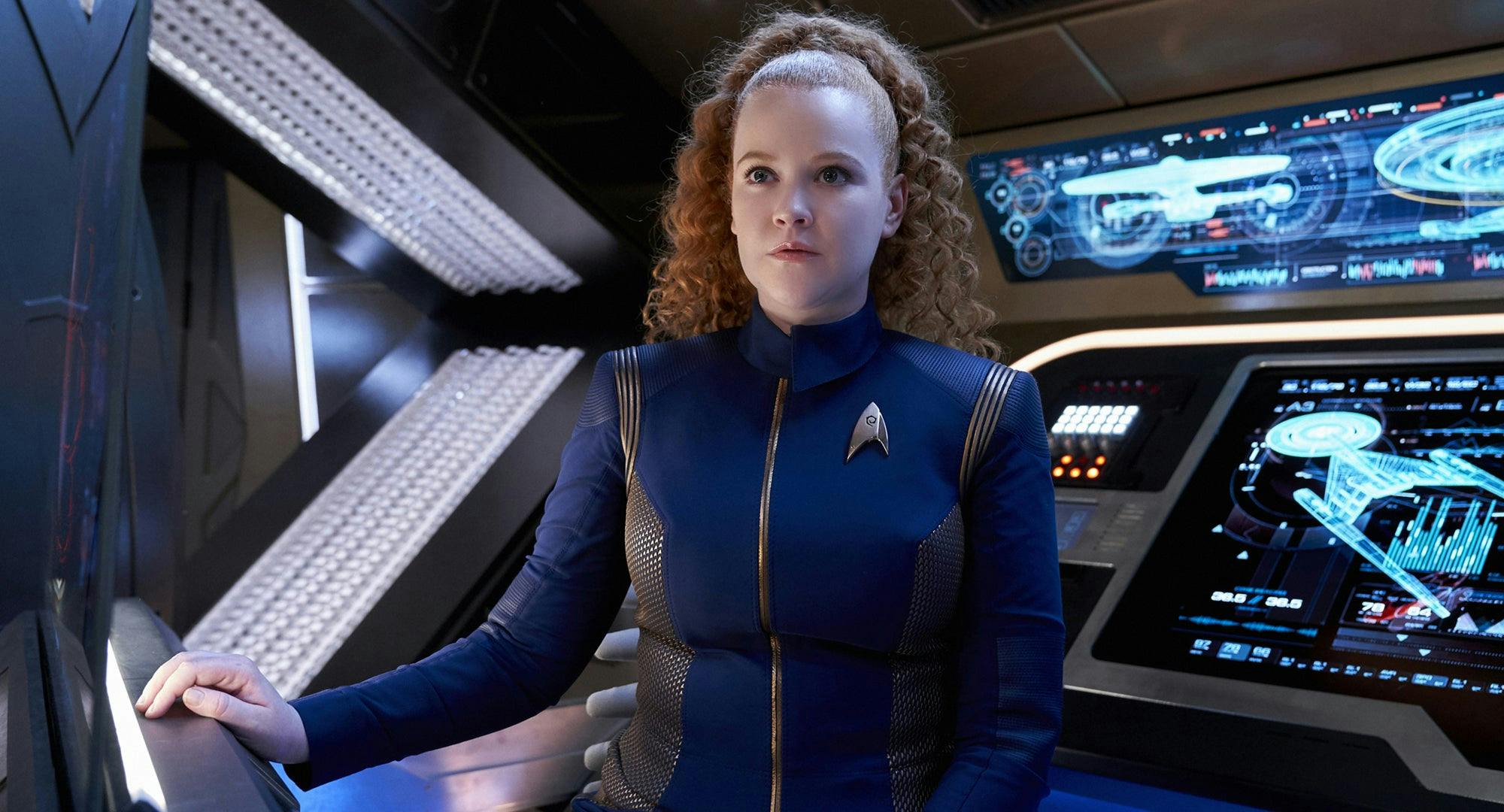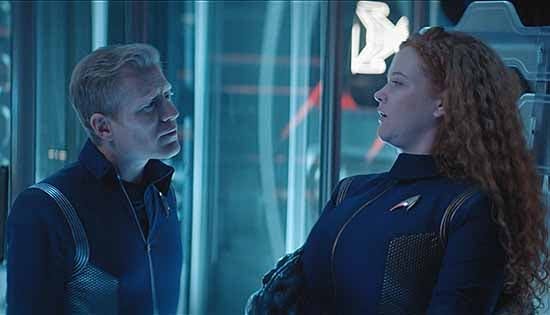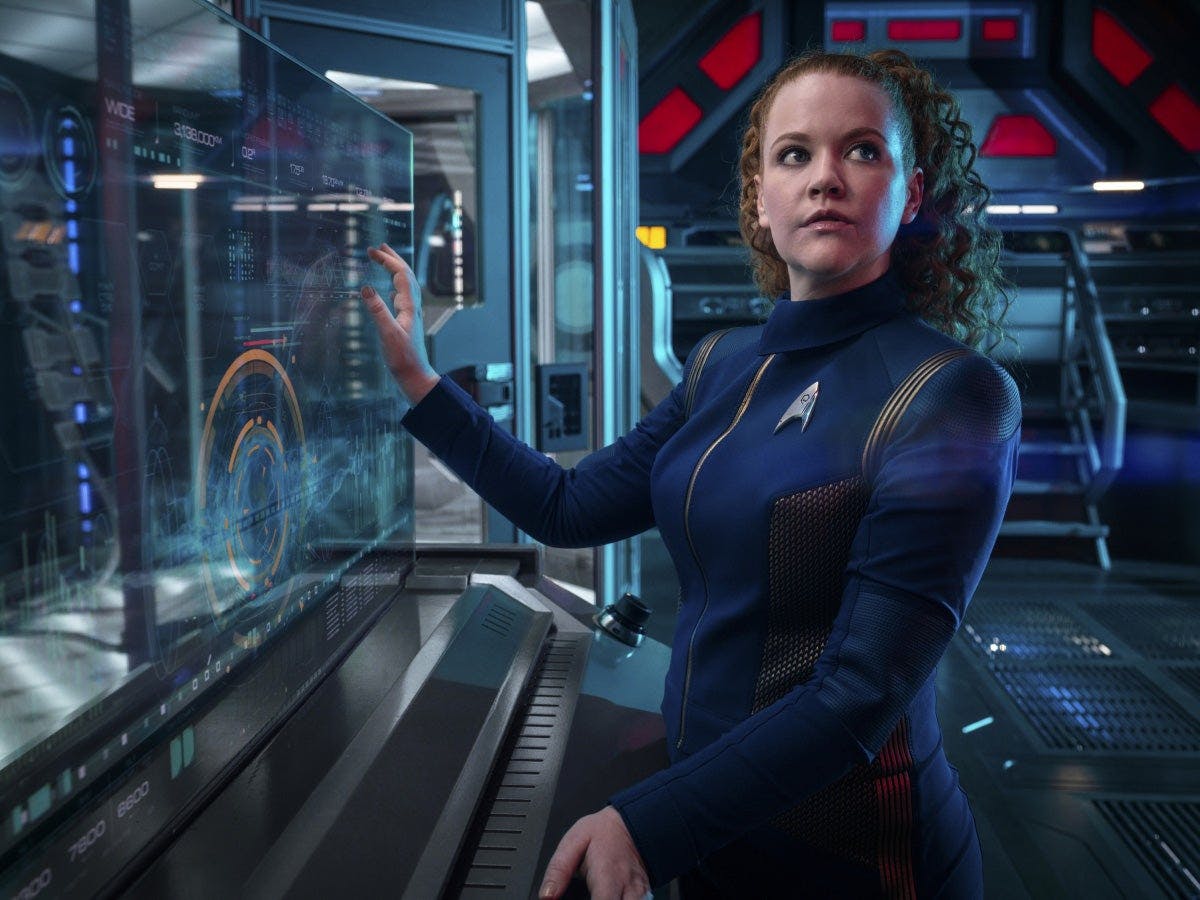Published Dec 9, 2021
The Tilly Moment
Tilly represents a different kind of leading lady for Star Trek.

StarTrek.com
This article was originally published on February 28, 2020.
"I was a weird kid," says Tilly to Stamets in Discovery’s Season 2 episode, “An Obol for Charon.” "Not a lot of friends. Nobody who really believed in me, including me."
Star Trek has had its share of heart-rending moments. From the late, great Aron Eisenberg’s portrayal of Nog’s post-traumatic stress in Deep Space Nine’s “It’s Only a Paper Moon,” to the classic tear jerker that is The Next Generation’s “The Inner Light,” the franchise never fails to move its audience.
But Tilly’s moment in “Obol” was unusual because it was not an emotionally weighty scene. This wasn’t like Michael dealing with Georgiou’s death or the bittersweet reunion of Stamets and Culber. Tilly is simply explaining to Stamets the context behind the spore alien who has taken the form of her childhood friend, May. And yet, as I watched it, I felt a wave of emotion hit me in the chest.
I started to cry.

Steve Wilkie/CBS ©2018 CBS Interactive
That’s when I realized that despite being a fan of the franchise since I was eight years old and watching LeVar Burton put on a VISOR at the end of an episode of Reading Rainbow; and despite having the geekiest 12th birthday humanly possible (thanks to a TNG-themed mystery game, costumes, snacks given themed names by my mom along with a lot of silver tinsel) I had never truly seen myself on screen. Love him or hate him, Wesley Crusher was a stand-in for young male fans. But the geek girls (not to mention the geeks who don’t align with any singular gender) never had an equivalent — not until Sylvia Tilly, in all her nerdy, quirky, over-caffeinated glory.
On TNG, Deanna and Beverly were traditionally feminine nurturers. Crusher was a mother and a doctor who took care of the crew’s physical health, while Troi took care of their emotional well-being along with diplomatic duties. Although I admired them, I didn’t identify with them.
By the time DS9 launched, I was old enough to appreciate its more mature themes. The characters felt like friends, while the cast of TNG felt more like mentors. I found myself more enamored with Trek than ever. I loved watching Kira be strong, hot-headed and brave, and Dax wise, funny, brilliant, and absolutely owning her sexuality while defying and transgressing gender roles. They were perfect role models for me as a teenager and young adult, but they were cooler and stronger than I’d ever be.
Voyager played with, deepened and re-defined past Trek tropes while adding in new ones. Janeway was the mother-warrior, Torres the angry freedom fighter, Kes, the ingénue, Seven the ice queen. But in all these iterations, there was one trope that was missing.

StarTrek.com
The giant. Freaking. Nerd.
Not just nerd in the sense of a talent and enthusiasm for science and exploration. Nearly every Starfleet officer had that baked into their DNA. But nerd implies a certain enthusiasm and social awkwardness we saw in Wesley, Bashir (in the early seasons), and Harry Kim. We hadn’t seen a unseasoned woman who was wide-eyed and a bit unprepared for the adventure laid out in front of her, and who was new to the uniform.
That changed with Discovery’s Ensign Sylvia Tilly, who we meet as an overenthusiastic cadet and the only person to give the disgraced Michael Burnham the time of day. She comes on strong, doesn’t seem to know when to stop talking, and gives the impression that she’s perpetually in over her head. She is also unfailingly kind and compassionate, and very smart. And as the show goes on, we learn that she is also incredibly brave, loyal, cool under pressure and pigheadedly determined.
We underestimate and devalue kindness and compassion, but it takes courage to hold onto those ideals in the face of darkness and, in Tilly’s case, a difficult childhood with an unsupportive family. While my own mother was putting out chips and naming them Ferengi Scales and making Romulan Ginger Ale, Sylvia’s was berating her and discouraging her efforts to first join Starfleet and then the command training program.
While I couldn’t identify with the unsupportive parent aspect of Tilly’s childhood, all geek girls know what it’s like to be the odd one out and to feel like an imposter. We were ignored or actively kept out of nerdy spaces for a long time. While boys found a community within nerddom, girls were mostly on our own. Many people were convinced we didn’t exist at all, or that our love of nerdy things was performative and shallow.

StarTrek.com
That’s why this otherwise unemotional scene in “Obol” hit me like it did. For the first time in the history of Star Trek, I felt seen. I felt like the writers and producers understood that there were nerdy women in the audience who grew up watching Star Trek but had never seen themselves on screen. That’s why it’s so important that the characters on our screen continue to reflect the diversity in the audience. Everyone deserves their Tilly moment.
Geek girls have always been here, and we’re here to stay. And now we have someone like us on screen, wearing the uniform and saving the galaxy while sometimes talking too much and tripping over her own feet. Being a hero, after all, isn't about perfection — it's about being brave and doing what's right.
It’s just that sometimes you need a quadruple espresso to get you there.
Robin Spittal is a cosplayer and a giant nerd (she realizes that’s redundant.) By day, she works for an indie sci-fi publisher. By night, she burns herself on her glue gun and binge watches science fiction. Twitter: @cosplayandnails
Star Trek: Discovery currently streams exclusively on Paramount+ in the U.S. Internationally, the series is available on Paramount+ in Australia, Latin America and the Nordics, and on Pluto TV in Austria, France, Germany, Italy, Spain, Switzerland and the United Kingdom on the Pluto TV Sci-Fi channel. In Canada, it airs on Bell Media’s CTV Sci-Fi Channel and streams on Crave. Star Trek: Discovery is distributed by ViacomCBS Global Distribution Group.
